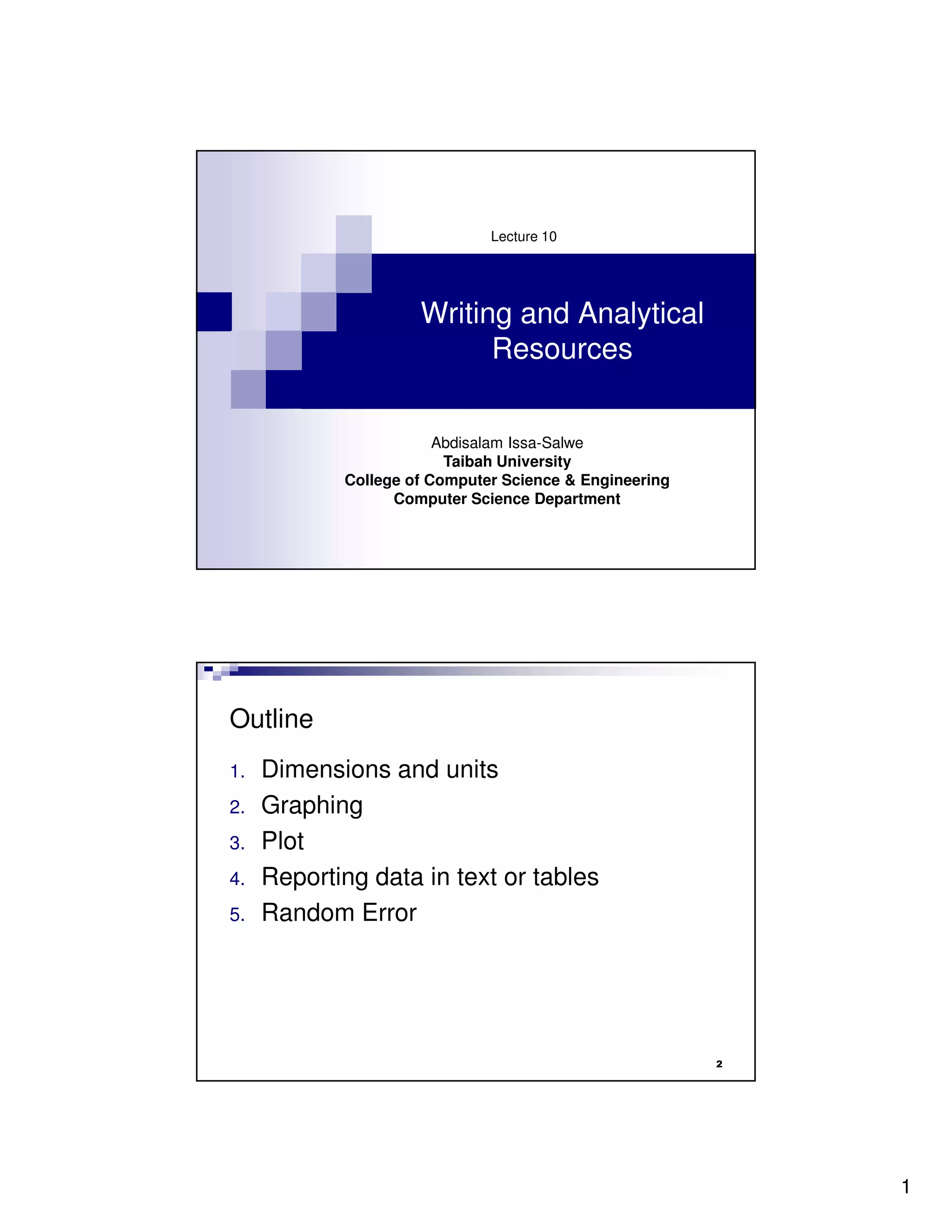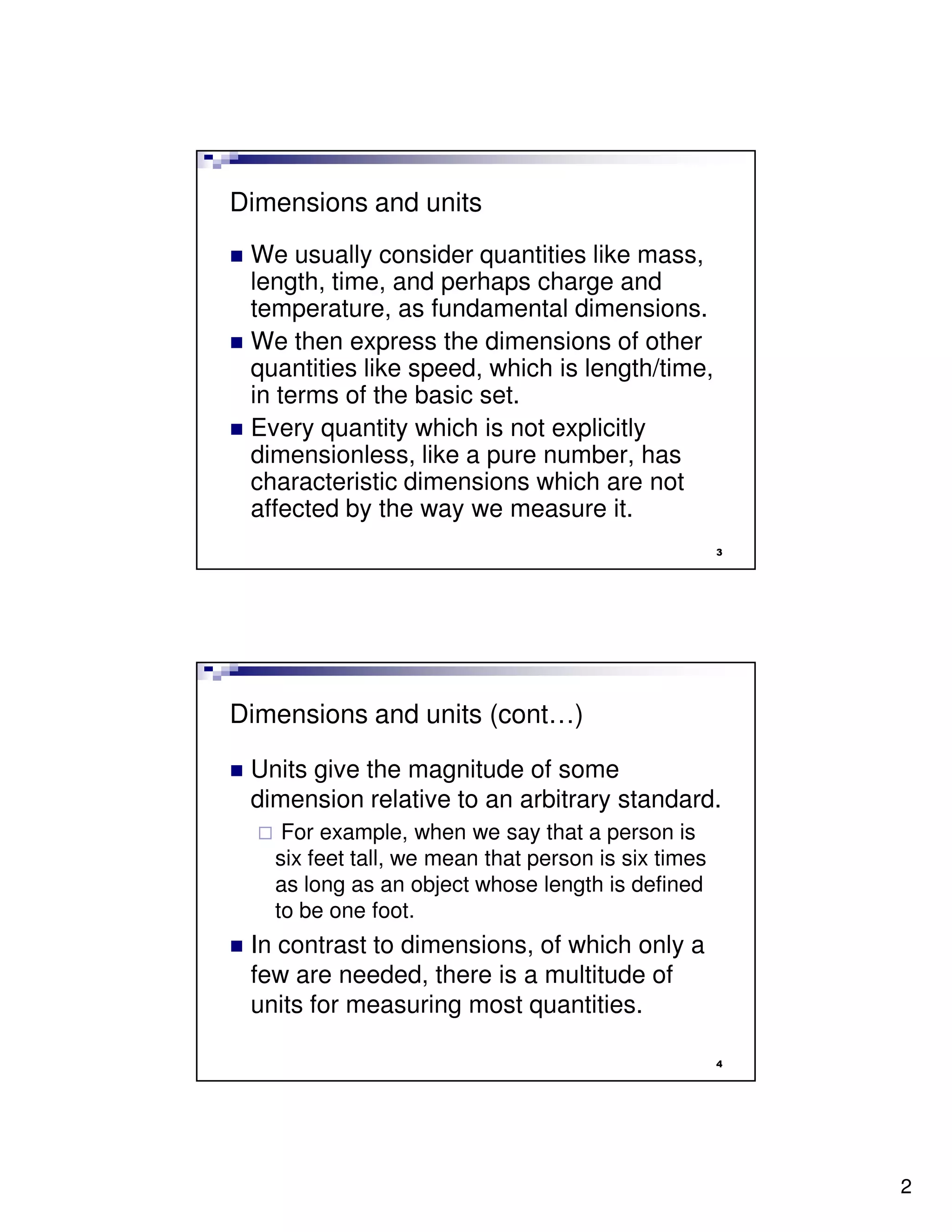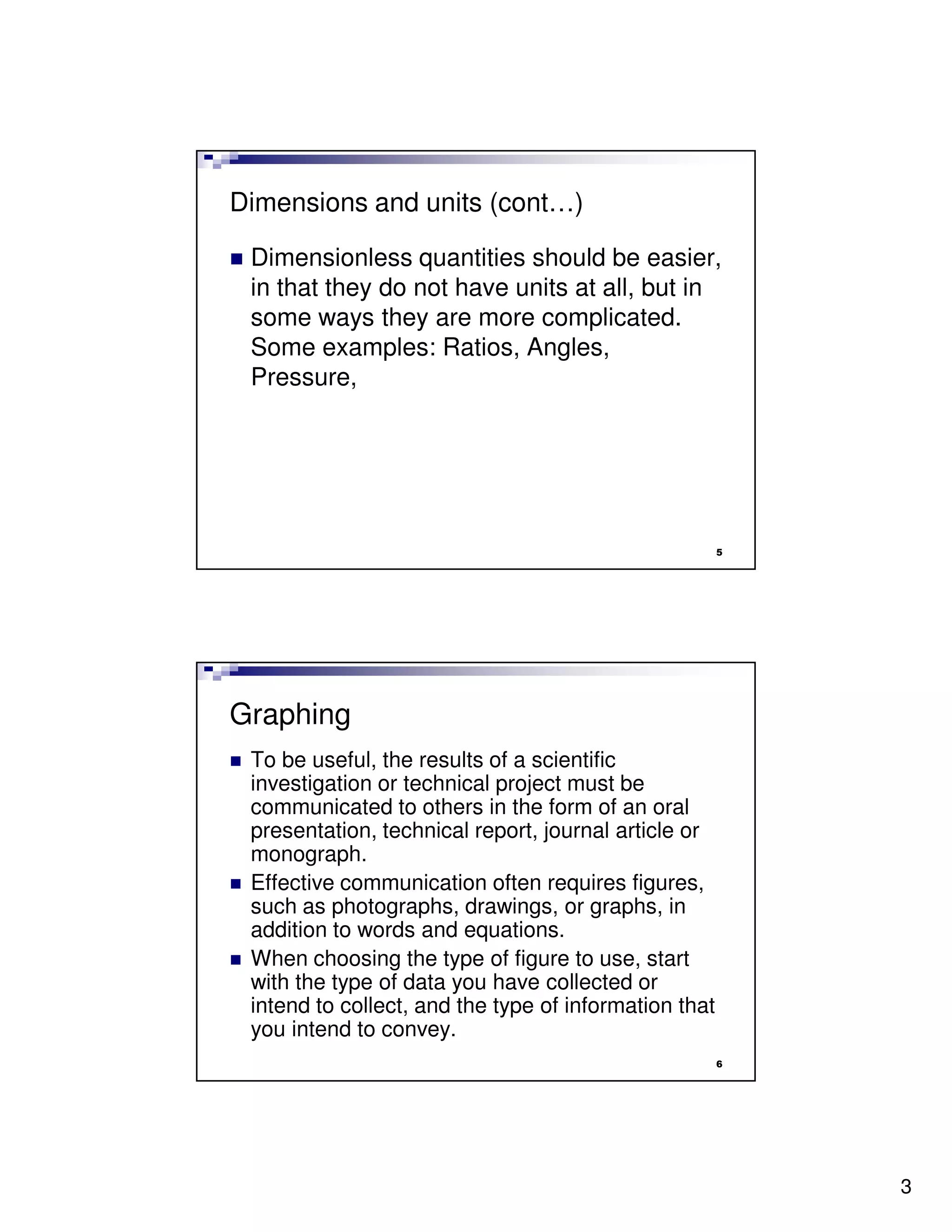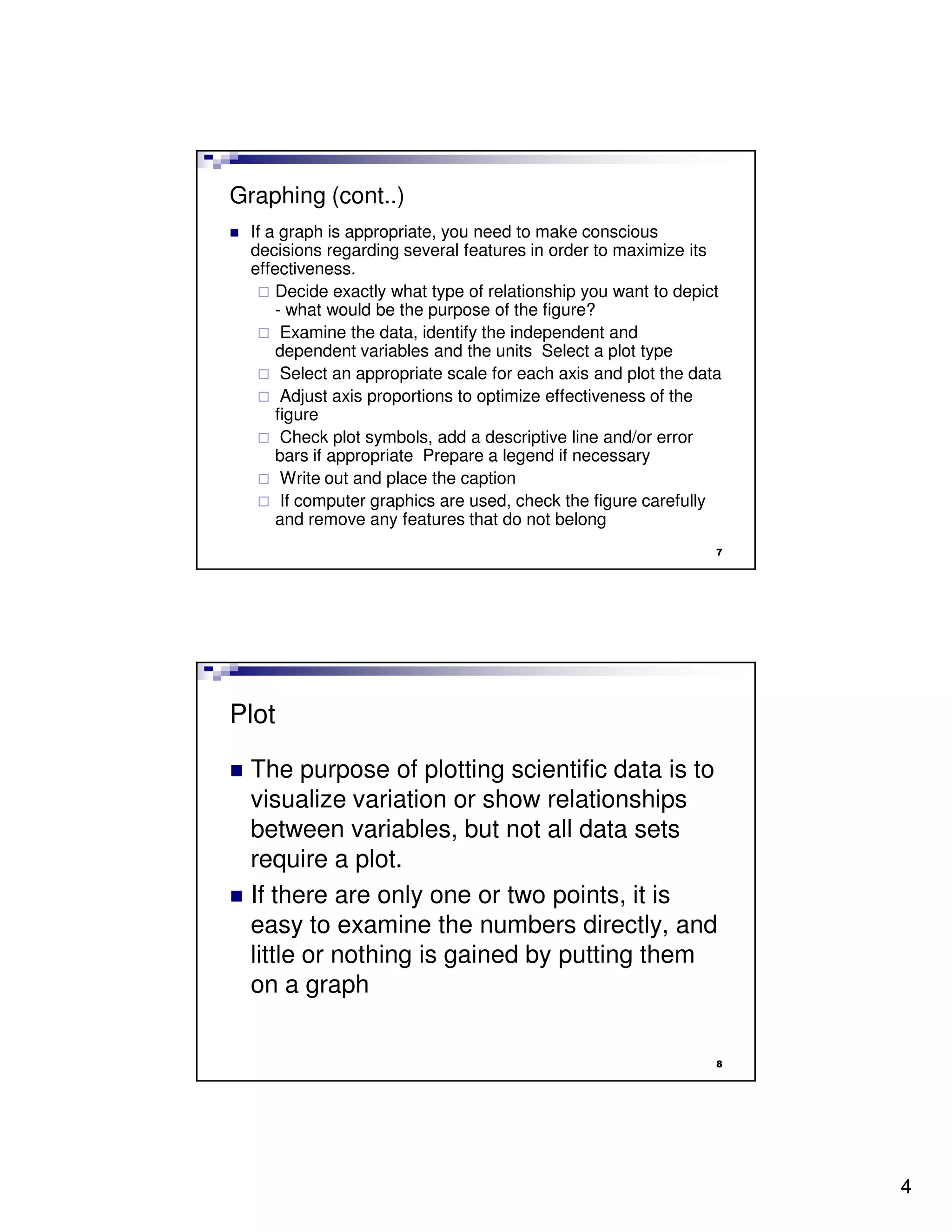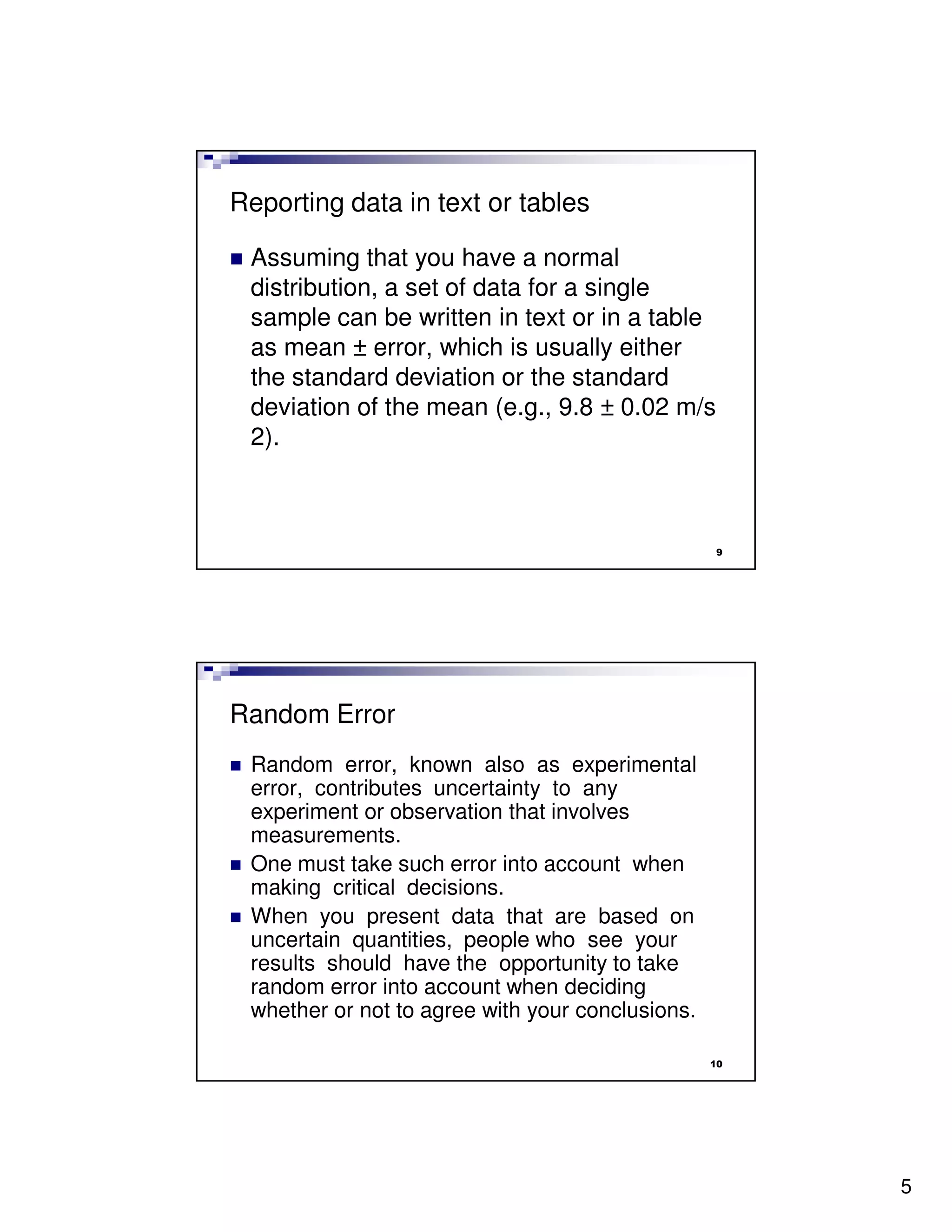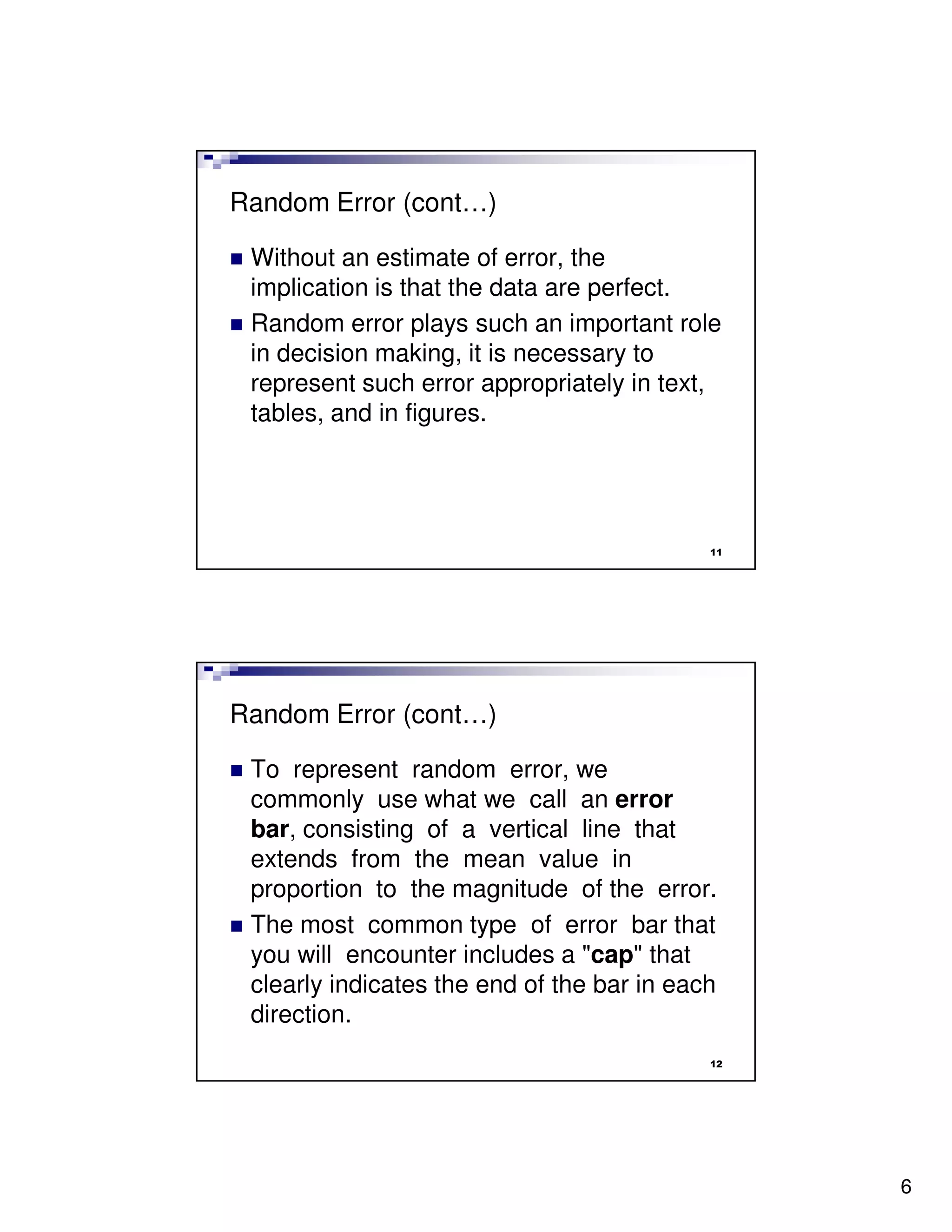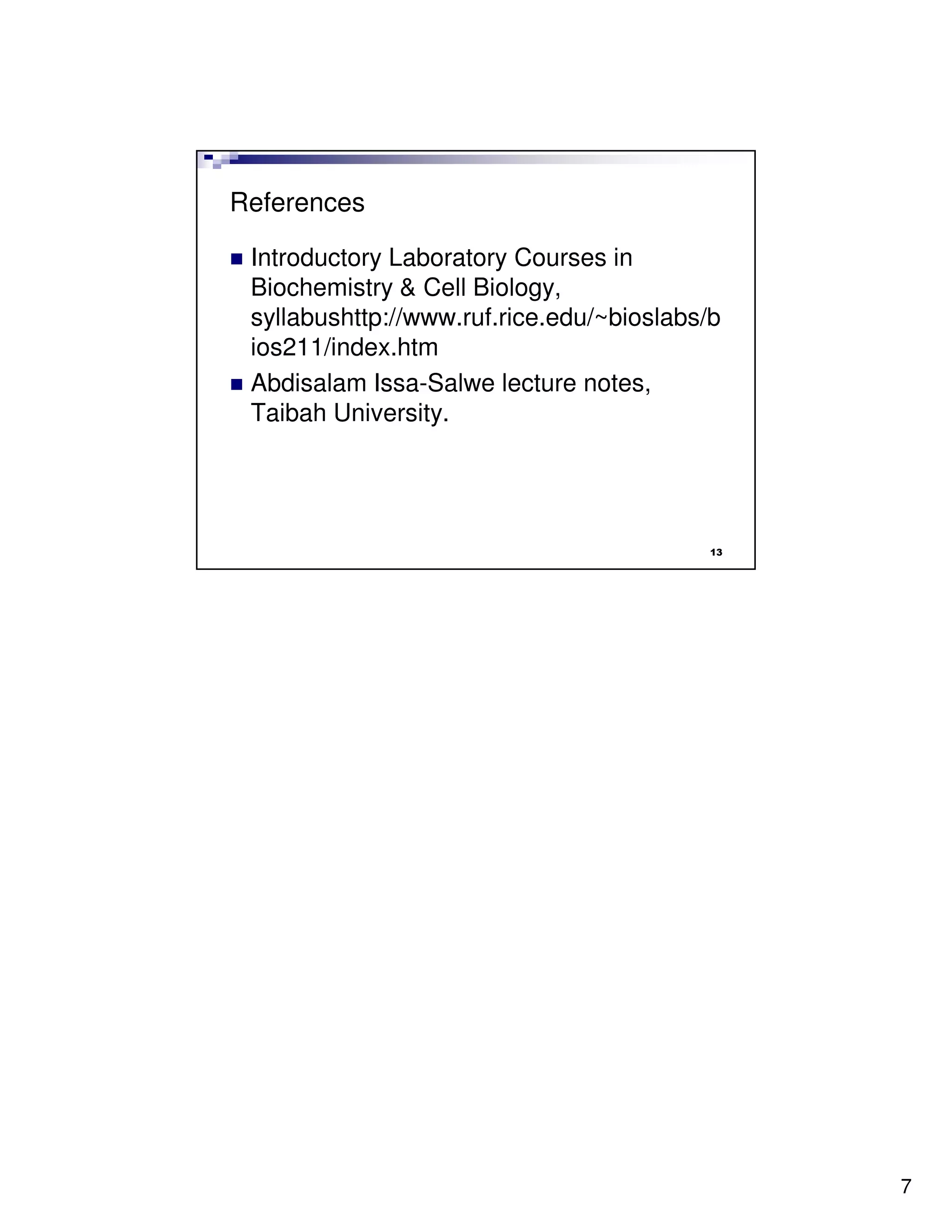This document outlines topics in writing and analytical resources including dimensions and units, graphing, plotting data, reporting data in text or tables, and representing random error. It discusses choosing appropriate units and expressing the dimensions of quantities. Graphing techniques like selecting plot types, scales, and legends are covered. The purpose of plotting data and conditions where plotting is not needed are addressed. Methods for writing data numerically or in tables are described. Random error and use of error bars to indicate uncertainty are also summarized.
